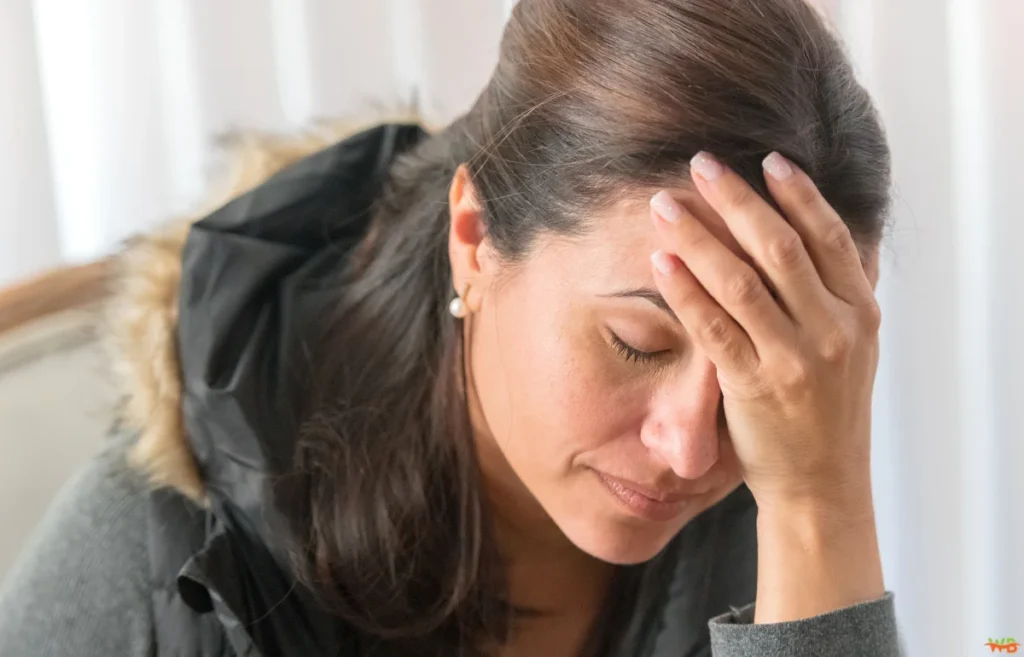
Let’s be real—talking about health issues, especially ones like uterine fibroids, isn’t exactly a dinner table conversation. But it should be! Fibroids are much more common than is often acknowledged. Many women suffer in silence, brushing off the heavy periods, constant bloating, or pelvic pain as “just part of being a woman.” It’s time to break that cycle. In this guide, we’re diving into what fibroids are and why they can cause severe complications if left untreated. Let’s tackle this together—because you deserve knowledge!
What Are Uterine Fibroids?
Uterine fibroids. Sounds scary, right? But they’re less intimidating than they seem at first. These are just non-cancerous growths that hang out in or around your uterus. Think of them as that friend who overstays their welcome—harmless at first, but can get pretty annoying if they take up too much space.
Types of Uterine Fibroids
Not all fibroids are the same, and understanding the differences can help your fibroids specialist choose the best treatment plan. Here’s the breakdown:
1) Intramural Fibroids: These grow right in the muscle wall of your uterus, kind of like adding an extra layer you didn’t ask for.
2) Submucosal Fibroids: These pop up under the uterine lining and are known to cause heavy bleeding.
3) Subserosal Fibroids: Found on the outer wall, these can press on nearby organs, making life uncomfortable.
4) Pedunculated Fibroids: Picture a fibroid swinging on a stalk—it’s weird but real.
The Prevalence of Uterine Fibroids
It’s surprising, but up to 80% of women may experience fibroids during their lifetime. Yep, you read that right. Fibroids are like that secret no one talks about, but everyone knows someone who’s dealt with them.
Black women and those with a family history are more likely to experience fibroids. Genetics, unfortunately, don’t play fair sometimes.
Causes and Risk Factors
Why do fibroids show up uninvited? The truth is, there’s no single reason. Let’s break it down so you can better understand what might be fueling these pesky growths.
1) Genetic Factors: If fibroids run in your family, they might come knocking on your door, too.
2) Hormonal Influences: Blame it on estrogen and progesterone—these hormones feed fibroids like fertilizer on a plant.
3) Lifestyle and Environmental Triggers: Things like stress, diet, and even environmental toxins can play a role. It’s like fibroids thrive on chaos.
Complications of Uterine Fibroids

Fibroids might start small and manageable, but when left unchecked, they can stir up a host of issues. From disrupting your daily routine to causing serious health concerns, these growths can have a bigger impact than you’d expect. Let’s take a closer look at how fibroids can complicate things—and why addressing them sooner rather than later is so important.
Impact on Daily Life
Fibroids can take a toll on your quality of life in surprising ways. Heavy bleeding might leave you feeling drained, causing anemia that zaps your energy and makes even simple tasks feel overwhelming. Frequent bathroom trips or feeling like your bladder is always full can disrupt your sleep, work, or social life. And let’s not even talk about the constant discomfort that can make exercise or intimacy challenging.
Serious Health Risks
While fibroids are usually non-cancerous, that doesn’t mean they’re harmless. When fibroids grow, they have the potential to cause severe complications.
1) Infertility or Pregnancy Complications: Fibroids can block the fallopian tubes, crowd the uterine space, or interfere with implantation. This makes it harder to conceive or carry a pregnancy to term.
2) Miscarriage Risks: Large fibroids can increase the chances of miscarriage or premature birth.
3) Severe Anemia: Prolonged heavy bleeding can lead to dangerously low iron levels, requiring medical intervention like iron supplements or even blood transfusions.
4) Organ Pressure: Fibroids growing too large can press on nearby organs, like the bladder or bowel, causing urinary retention or constipation.
Emotional and Mental Health Impact

Fibroids don’t just affect your body—they can take a serious toll on your emotional well-being, too. Dealing with chronic symptoms, uncertainties about treatment, or the fear of how fibroids might affect your future can feel overwhelming. Let’s explore how these growths impact mental health and how you can cope.
Dealing with the Diagnosis
Hearing the word “fibroids” from your doctor can hit hard. For many women, it triggers feelings of anxiety, frustration, or even shame. Questions like “Why me?” or “What did I do wrong?” may start swirling in your mind. It’s important to remember that fibroids are common and not your fault—they’re just one of those things your body decided to throw at you.
Living with Chronic Symptoms
When symptoms like heavy bleeding, pain, or fatigue are constant, it’s easy to feel drained, not just physically but emotionally. Dealing with these issues day after day can lead to stress, irritability, and even burnout. It’s like running a marathon every day without a finish line in sight.
Impact on Self-Image and Confidence
Fibroids can also mess with how you see yourself. Persistent bloating might make you feel self-conscious, and fears about fertility or intimacy can take a hit on your confidence. It’s tough not to feel like your body is working against you.
Navigating Fertility Challenges
For women hoping to start a family, fibroids can add another layer of emotional complexity. The possibility of difficulty conceiving or carrying a pregnancy can lead to feelings of:
- Grief
- Guilt
- Inadequacy
But remember, these emotions are completely unfounded.
Coping with Uncertainty
Not knowing what’s next—Will symptoms get worse? Will treatments work?—can create a cloud of uncertainty. The emotional weight of “what ifs” can make it hard to focus on the present and enjoy life.
Seeking Support and Building Resilience
You don’t have to go through this by yourself—help is out there. Engaging in conversations with friends or support networks can foster healing and resilience. Sometimes, just sharing your story with someone who understands can lighten the load. Therapy can also be a powerful tool, helping you navigate the emotional challenges fibroids bring.
Conclusion: Understanding Uterine Fibroids and Taking Control
Uterine fibroids don’t have to run your life. With the right knowledge, support, and treatment, you can take control and live on your terms. So, let’s keep talking, keep learning, and keep supporting each other—because you’re not alone in this journey.
FAQs
1. Can uterine fibroids cause weight gain?
Uterine fibroids themselves do not directly cause significant weight gain, but they can lead to feelings of bloating and pelvic pressure, especially when they grow larger. This can make some women feel heavier or more uncomfortable. In rare cases, large fibroids may also cause the abdomen to appear distended, which can create the illusion of weight gain.
It’s important to remember that other factors, such as hormonal imbalances or lifestyle choices, may also contribute to weight fluctuations in women with fibroids.
2. Are uterine fibroids linked to menopause?
Yes, fibroids are often affected by menopause. As women approach menopause, the levels of estrogen and progesterone naturally decrease, which can cause fibroids to shrink in size. However, this doesn’t happen for every woman, and some may continue to experience symptoms of fibroids even after menopause.
In rare instances, fibroids may grow post-menopause, especially in women who are on hormone replacement therapy. If fibroid symptoms persist or worsen after menopause, it’s important to consult with a healthcare provider for appropriate management.
3. How are uterine fibroids diagnosed?
Uterine fibroids are typically diagnosed through a combination of physical exams and imaging tests. The doctor may use gentle pressure on the abdomen to evaluate the size, shape, and position of the uterus during a pelvic exam. A common method for diagnosing fibroids is ultrasound, a procedure that uses sound waves to visualize the uterus and identify any fibroid growths.
Other diagnostic tools include MRI scans for detailed imaging or hysteroscopy, where a small camera is inserted into the uterus to directly visualize any fibroids. A doctor will choose the most appropriate method based on the patient’s symptoms and medical history.
4. Can diet help manage uterine fibroids?
While no specific “fibroid diet” exists, a healthy and balanced diet can play a role in managing fibroid symptoms and promoting overall health. Consuming a diet rich in fruits, vegetables, and whole grains may help reduce inflammation and support hormonal balance. Foods high in fiber, antioxidants, and vitamins can also help maintain a healthy weight and promote optimal body function.
Conversely, avoiding processed foods, excessive sugar, and red meats may help reduce symptoms like bloating and heavy bleeding. Additionally, women with fibroids may benefit from maintaining a healthy body weight, as obesity can exacerbate fibroid-related symptoms.
5. Is surgical intervention necessary for all cases of uterine fibroids?
Uterine fibroids can be treated through a variety of options, with surgery being only one of them. Many women with fibroids can manage their symptoms with non-surgical treatments. Medications such as hormonal therapies, pain relievers, and the use of IUDs can help control symptoms like heavy bleeding and pelvic pain. For those seeking less invasive procedures, options like uterine artery embolization (which cuts off the blood supply to the fibroids) and focused ultrasound can reduce the size of fibroids without the need for traditional surgery.
Surgery, such as myomectomy or hysterectomy, is typically reserved for cases where fibroids cause severe symptoms, are large, or interfere with fertility. Your healthcare provider can help you explore the best treatment options based on your unique situation.

I’m Salman Khayam, founder of Wellbeing Junction. I synthesize trusted information from research and expert guidance to create clear articles across health, wellness, and lifestyle topics.
Disclaimer: Content is for informational purposes only and is not medical advice. Consult a qualified expert regarding personal health or specialized questions.
Discover more from Wellbeing Junction
Subscribe to get the latest posts sent to your email.

